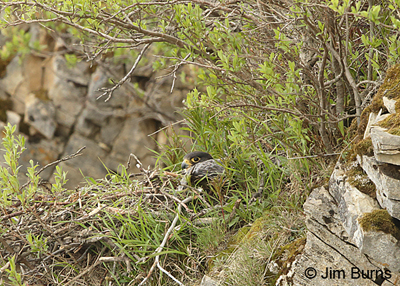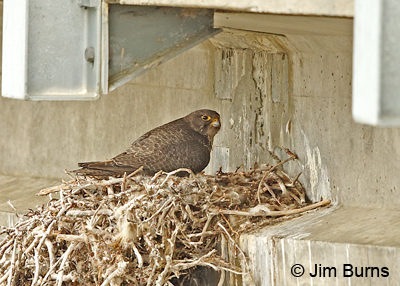
* * *
If you have any interest in birds, you probably have more than a passing interest in raptors and their dramatic lifestyles. Pardon my unabashed anthropomorphism while contemplating this question. Which would be the more exciting sighting, Peregrine Falcon or Gyrfalcon? Of course every birder would say the latter. In the course of my birding lifetime I’ve had hundreds of Peregrine sightings, there may be more photographs of Peregrines on our website than of any other species, and right now I know of three Peregrine nests within a thirty mile radius of downtown Phoenix. Until my most recent Gyr sighting last month, I could count those sightings on one hand, and I now have a grand total of three Gyr photographs, none you’ll ever see on a magazine cover.
Consciously or not, birders attach value to their sightings based on the rarity of the species and/or the behavior observed. Typically Peregrine sightings involve flyovers or inaccessibly high cliffsite aeries. Gyr sightings are so rare in a normal birder’s life they beggar the use of the word “typical.” In short, to see a Peregrine you just have to keep looking up, while to see a Gyrfalcon you will always be exercising wishful thinking in a journey that requires large expenditures of time and money and a high tolerance for discomfort.
So . . . last month in Alaska we saw one Peregrine and one Gyrfalcon, both females sitting on nests. The former was one of the coolest sightings of our ten day trip, the latter one of the most disappointing. It’s all relative, right? Here’s the explanation, replete with pictures, and it has much to do with the immensity of Alaska, the dearth of human intrusion there, and the expectations that crowd the soul of birders who visit there.
Our lady Peregrine was below us along the cutbank of the raging wilderness river in the first paragraph. How many people have ever looked down on a Peregrine nest without technical climbing gear and a fear of death? The discovery of her inaccessible and nearly impossible to see nest was a stroke of dumb luck by our guide. Our Gyr lady was nesting beneath the bed of a well-traveled bridge atop a concrete abutment splattered with whitewash and well known to every birding group that visited Nome this spring.
The photos, above and below, tell the story. The top one is going on my living room wall. The bottom one, not so much.